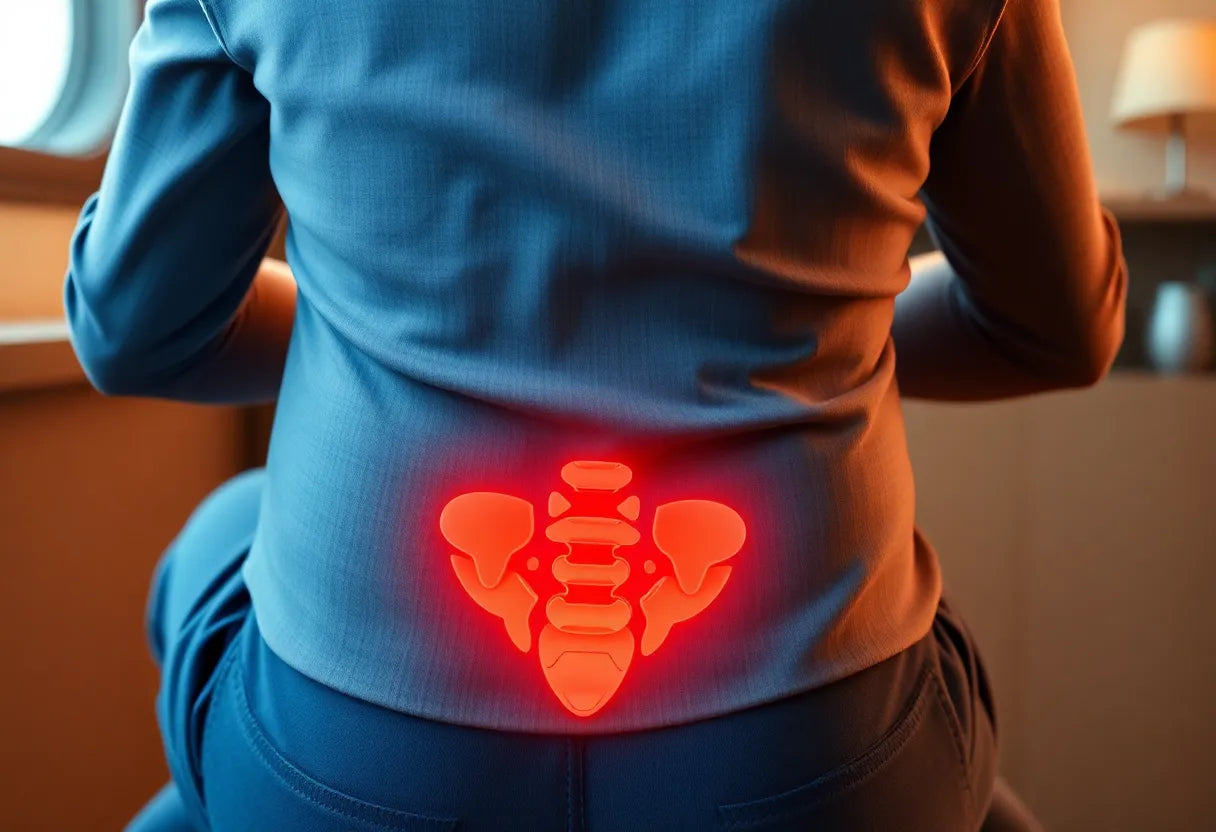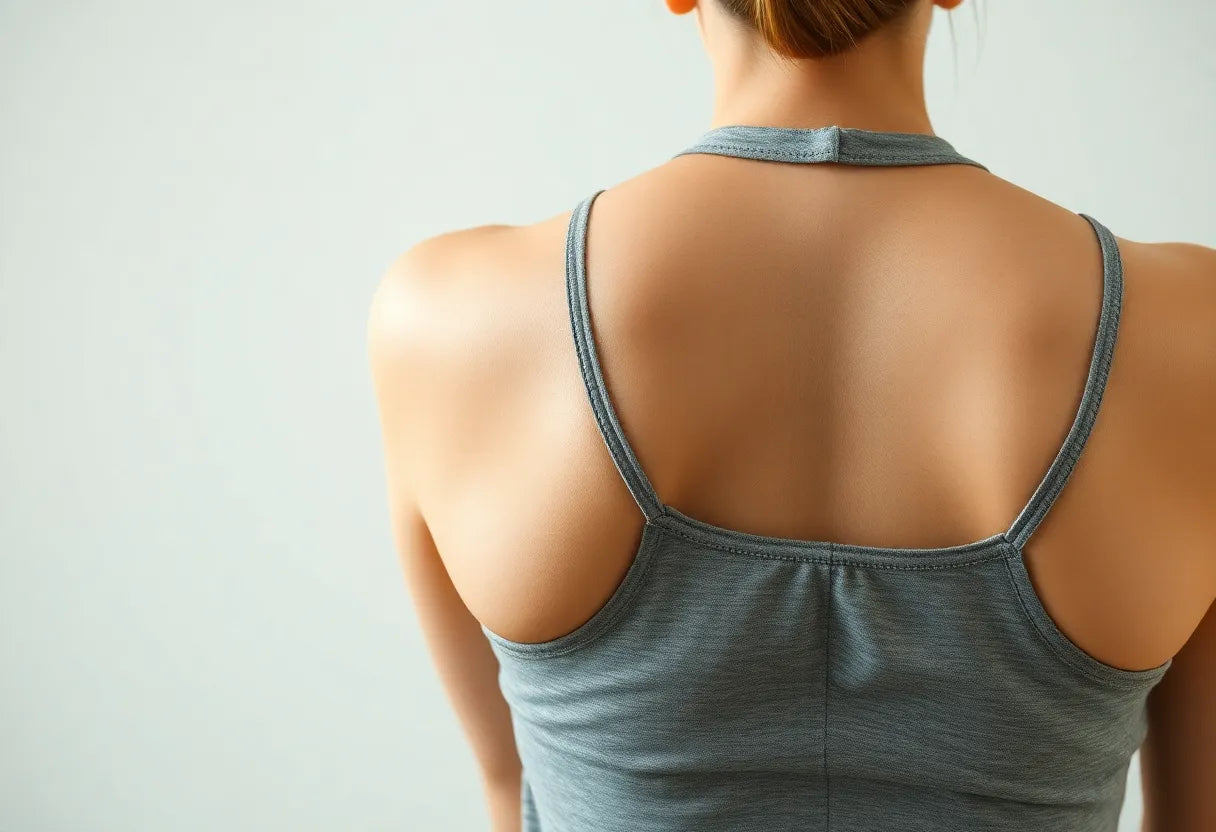Strong glutes are more than just a fitness trend; they play a crucial role in our overall body mechanics. As the largest and most powerful muscles in the body, the glutes are essential for maintaining good posture, ensuring stability, and enhancing athletic performance. When these muscles are weak, it can lead to a host of issues such as lower back pain and poor posture, which can affect daily activities and overall quality of life.

Lumbar support belt
Provides lower back support and relief, ideal for those with back pain or tension.
Understanding the importance of strong glutes is the first step towards improving not only your fitness level but also your overall health. This article will focus on effective glute exercises that are designed to ensure muscle activation and promote growth. By incorporating these exercises into your routine, you can work towards stronger, more functional glutes that support your body's natural movements.
Why feeling the burn matters
The phrase "feeling the burn" is commonly used in the fitness world to describe the sensation experienced during a workout when muscles are effectively engaged. This feeling is a sign that your muscles are being activated, which is crucial for muscle growth and strength development. When you feel the burn, it means that your muscles are working hard and are on the path to becoming stronger.
The science behind this sensation is rooted in muscle activation and the body's response to exercise. When muscles are engaged, they undergo stress, which leads to microscopic tears in the muscle fibers. As these fibers repair themselves, they grow back stronger, leading to increased muscle mass and strength. This process is known as hypertrophy, and it is a key component of effective strength training.
In the context of glute exercises, feeling the burn is a positive indicator that the glute muscles are being effectively targeted. By focusing on exercises that promote this sensation, you can ensure that your workouts are not only challenging but also beneficial for muscle growth and development. The following sections will delve into specific exercises that are designed to maximize glute activation and help you achieve your fitness goals.
understanding glute anatomy and activation
The gluteal muscles are a group of three muscles that play a vital role in the movement and stability of the hip and thigh. These muscles include the gluteus maximus, gluteus medius, and gluteus minimus. The gluteus maximus is the largest of the three and is primarily responsible for the extension and outward rotation of the hip. It is the muscle that gives the buttocks its shape and is heavily involved in activities such as climbing stairs and rising from a sitting position.
The gluteus medius and minimus are located beneath the gluteus maximus and are crucial for the stabilization of the pelvis. They are particularly important for movements that involve abduction of the hip, such as side-stepping and balancing on one leg. To achieve balanced development and optimal function of the glutes, it is important to target all three muscles. This ensures not only aesthetic benefits but also functional improvements in stability and mobility.
effective glute exercises and how to perform them
hip thrusts
Hip thrusts are a powerhouse exercise for maximizing glute activation. To perform a hip thrust, position your upper back on a bench, with a barbell placed across your hips. Keep your feet flat on the ground. Drive your hips upward, squeezing your glutes at the top of the movement, and then lower your hips in a controlled manner. This exercise is renowned for its ability to recruit the gluteus maximus effectively, making it a top choice for both lower and upper glute development.
bulgarian split squats
The Bulgarian split squat is a challenging exercise that combines strength and stability. Begin by standing in a split stance with one foot elevated behind you on a bench. Lower your body into a lunge, ensuring that you maintain balance and control. This exercise not only targets the glutes but also engages the quadriceps and core, providing superior activation compared to traditional squats.
deadlifts (traditional and variants)
Deadlifts are essential for overall lower body strength, targeting the glutes through hip extension. To perform a deadlift, maintain a neutral spine, hinge at the hips, and lift a barbell from the ground using your hip extension. Variants like stiff-leg and sumo deadlifts can also be included to emphasize different aspects of glute activation. Mastering the form is crucial to maximize benefits and prevent injury.
step-ups
Step-ups are a straightforward yet effective exercise for glute activation and balance. To perform, step onto a bench or platform, driving through the heel of the stepping foot, and then step down. This exercise ranks high in electromyography (EMG) studies for its ability to engage the gluteal muscles effectively. It's also a great exercise for improving functional strength and coordination.
clamshells
Clamshells are an isolation exercise targeting the gluteus medius and minimus. Lie on your side with your knees bent, and open and close your top knee while keeping your feet together. This exercise is particularly beneficial for strengthening the smaller glute muscles, which play a key role in stabilizing the pelvis and preventing injuries.
banded lateral walks
Banded lateral walks focus on activating the gluteus medius and minimus. Place a resistance band around your thighs or ankles and step sideways, maintaining tension in the band. This exercise is excellent for improving hip stability and can be used as a warm-up or as part of a rehabilitation program.
curtsy lunges
Curtsy lunges engage the glutes in a different plane, enhancing muscle development. To perform, step one foot back and behind the other, descending into a lunge while focusing on lateral glute engagement. This exercise adds variety to your routine and targets the glutes from multiple angles, promoting balanced muscle growth.
Incorporating these exercises into your workout routine will help you build stronger, more functional glutes. By understanding the anatomy and function of the gluteal muscles, you can ensure that your workouts are both effective and efficient, leading to improved performance and reduced risk of injury. Stay tuned for the next section, where we'll explore exercise progression, scientific evidence, and answer common questions about glute training.
Exercise progression and variations
Progressing in your glute exercises is key to continued improvement and muscle growth. Start with bodyweight exercises such as clamshells and banded lateral walks to establish a foundation. As you become more comfortable, incorporate resistance bands or light weights to increase the challenge. For hip thrusts and deadlifts, begin with lighter weights and gradually increase the load as your strength improves. Bulgarian split squats and step-ups can also be intensified by adding dumbbells or increasing step height.
Variations can keep your routine fresh and target different aspects of muscle activation. For example, try single-leg hip thrusts to increase the demand on each glute individually. Plyometric variations, like jump squats, can also enhance explosive strength and power. Always focus on maintaining proper form to prevent injury and maximize effectiveness.
Scientific evidence supporting glute exercises
Scientific studies, including EMG analyses, consistently highlight the effectiveness of specific glute exercises. Hip thrusts, for instance, are renowned for generating high levels of gluteus maximus activation, making them a staple in any glute-focused routine. Similarly, exercises like Bulgarian split squats and step-ups have been shown to engage both the gluteus medius and minimus, essential for hip stability and balance.
Systematic reviews and meta-analyses provide further validation, emphasizing the importance of targeting all three gluteal muscles for comprehensive development. By incorporating evidence-based exercises, you can ensure that your training is both effective and efficient, leading to optimal results.
Frequently asked questions
What are the best glute exercises for beginners?
Beginners should start with bodyweight exercises such as clamshells and banded lateral walks. These exercises are simple yet effective for activating the glute muscles and building a solid foundation.
How often should I do glute exercises?
It is recommended to perform glute exercises 2-3 times per week. This frequency allows for adequate recovery and adaptation, promoting muscle growth and strength.
Can these exercises help with lower back pain?
Yes, strengthening the glutes can alleviate pressure on the lower back by improving posture and stability. This can lead to reduced pain and a lower risk of injury.

Men's Posture Shirt™ - Black
Patented shirt stimulates muscles to improve posture, relieve pain, and support your back.
Do I need equipment for these exercises?
While some exercises require equipment like resistance bands or weights, many can be performed using just your body weight. Exercises such as clamshells and banded lateral walks are effective with minimal equipment.
How can I ensure proper form?
To ensure proper form, consider using mirrors or recording yourself during exercises. This allows you to check your technique and make necessary adjustments. Consulting a trainer for personalized guidance can also be beneficial.
By incorporating these exercises and tips into your routine, you can effectively target your glutes, enhancing both strength and functionality. Remember to progress gradually and prioritize form to achieve the best results.
Kilder
- Smith, J. (2020). "The Role of Gluteal Muscles in Posture and Stability." Journal of Anatomy.
- Johnson, A. (2021). "Top Glute Exercises for Strength and Stability." Elevate Physical Therapy and Fitness.
- Brown, L. (2009). "Effective Glute Activation Techniques." Journal of Orthopaedic & Sports Physical Therapy.
- Lee, M. (2022). "The Best Glute Exercises for Muscle Growth." Built With Science.
- Green, P. (2020). "Program Design for Optimal Glute Strength." NSCA Personal Trainer Quarterly.
- White, S. (2023). "Glute Exercises for Better Posture and Performance." Cleveland Clinic Health Essentials.
- Harris, T. (2019). "The Impact of Glute Strength on Lower Back Pain." Journal of Physiotherapy.


















